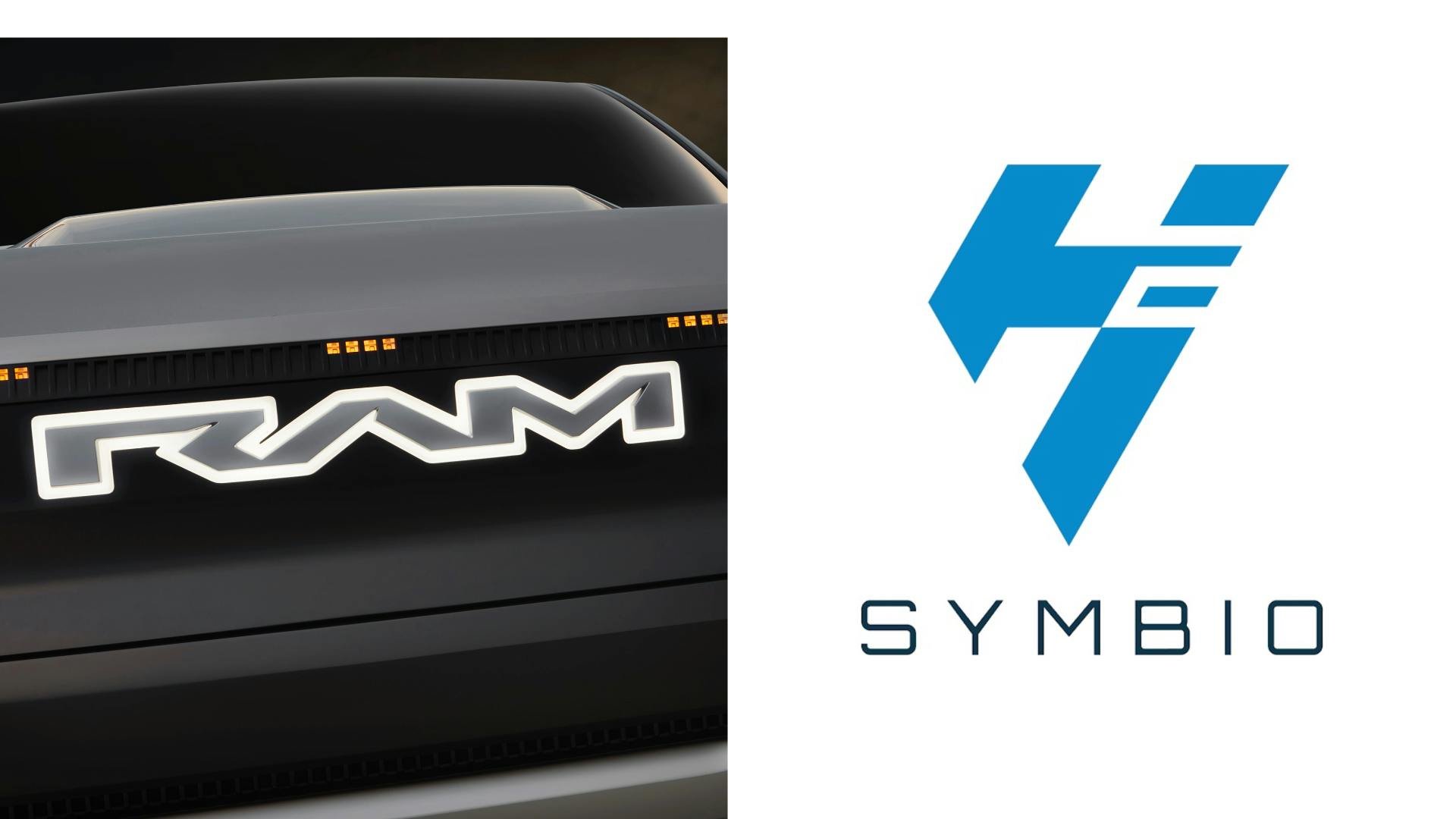During a keynote from Carlos Tavares at this year’s CES show in Las Vegas, he discussed the latest strategic investment in a company called Symbio. The French company makes the technology needed to build hydrogen vehicles.
Symbio’s CEO, Phillipe Rosier, sat down with EV Pulse along with the North American General Manager, Rob Del Core, to talk about its latest technology and where we’ll expect to find it.
We have a full feature on the NextGeneration StackPack technology, which you should check out, but basically its taking hydrogen tech and making it smaller and lighter while maintaining durability.
We asked Rosier why hydrogen still makes sense and where we expect to see Symbio’s products.
“It’ll be an arbitrage between battery performance and fuel cell,” Rosier tells us. “We are starting in LCV and pickups. Why that? There is a share of this segment where the vehicles come back to the base where they can establish a refueling station.”
There’s a lot to parse here, so let’s break it down.
When you look at the current battery-electric pickup trucks on the market, many have large battery packs. That weight cuts into the overall towing and payload capacity of that truck. Eventually, putting more batteries into it just doesn’t make sense.
Ford’s Jim Farley told Automotive News last October, “If you’re pulling 10,000 pounds, an electric truck is not the right solution. And 95 percent of our customers tow more than 10,000 pounds.” He added, “This is a really important segment for our country and it will probably go hydrogen fuel cell before it goes pure electric.”
Next, the solution for LCV and pickup trucks is similar to how companies are approaching commercial EVs. There is a central hub where the vehicles return to each evening. This might be after running a delivery route, or driving from one depot to another hauling cargo.
Since those vehicles end up in the same place each and every day, it becomes much more cost effective to have EV chargers, or in this case hydrogen fueling stations, at those depots.
Lastly, quantities of scale help reduces production cost for the technology to spread to other segments.
Rosier also believes that LCVs will get hydrogen first, with the Class 8 tractor offerings coming later. This is different from the approach both Hyundai and Toyota are taking with their respective hydrogen experiments.
“We’re already running these vehicles in Europe,” he tells us. “I’ll think you’ll be surprised [at hydrogen adoption] in U.S. It’ll be faster than Europe.”
Converting to hydrogen on vehicles is just one area where this makes sense. Batteries can only be so dense, and hydrogen is a great way to store energy in a smaller footprint. You can imagine why having batteries with two-way power attached to the grid makes sense — we talk about it here — but you can store even more energy with hydrogen.
That’s part of Symbio’s approach.
But let’s go back to that LCV discussion. Symbio projects the capacity to produce 200,000 systems by the year 2030. The company also is producing units in the United States, and will continue to expand that production.
Rosier also tells us that testing of the NG2 system, which would appear in LCV vehicles, pickup trucks, and SUVs will be shipped to customers for testing in 2024, with mass production expected to start by the end of 2026.
Ram Trucks builds both commercial and retail consumer trucks, and with the recent Stellantis investment, you don’t have to be a rocket scientist to make the connection. It may not replace the Cummins in the next-generation truck, but we wouldn’t be surprised if hydrogen is an option box that can be checked on a future version of the truck.
We reached out to Stellantis for comment, and was told by a representative that, “we do not comment on future product.”
Infrastructure will need to improve before retail consumers can safely buy one, but for commercial customers where BEVs don’t deliver, fuel cell technology becomes a practical solution to decarbonization.

